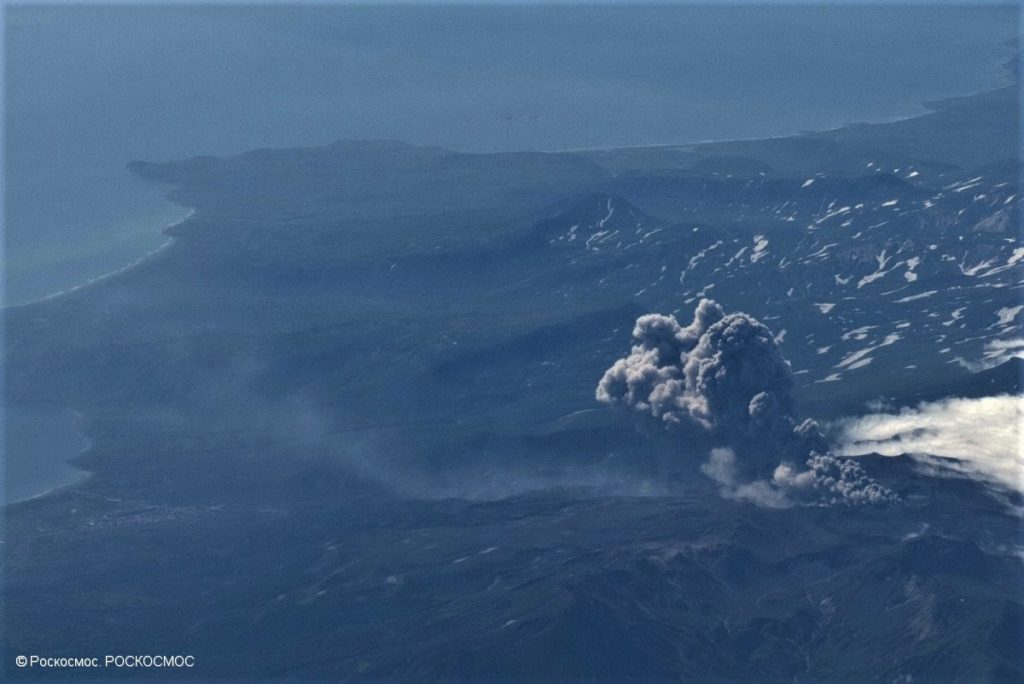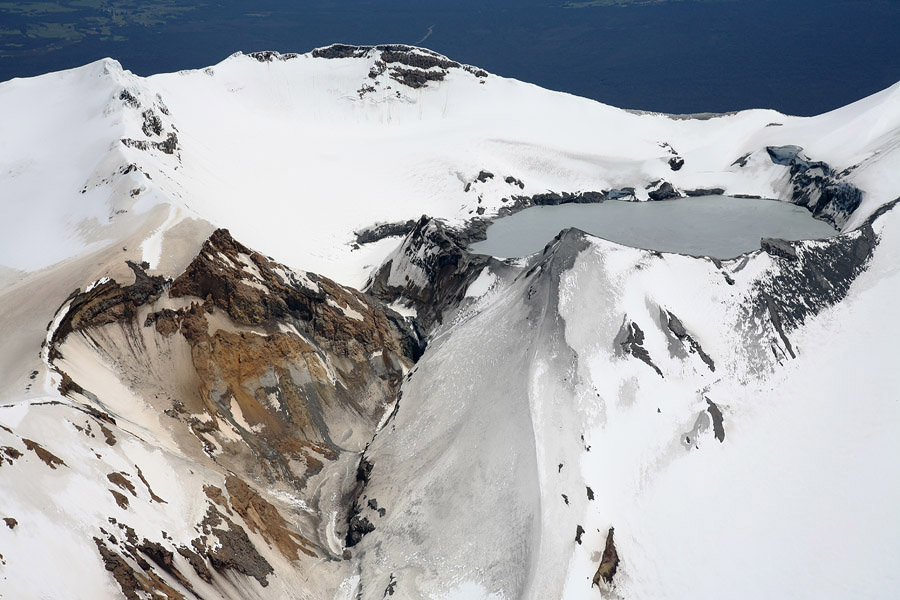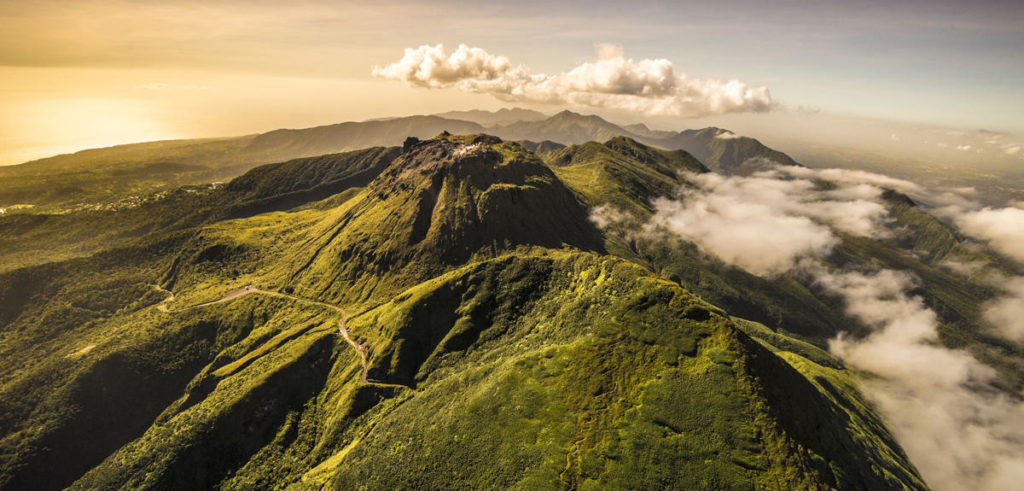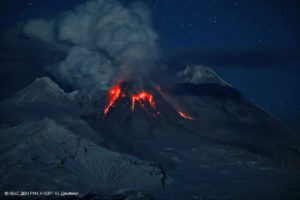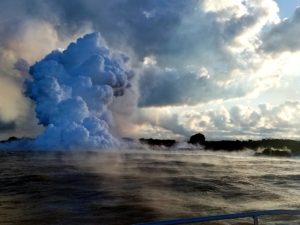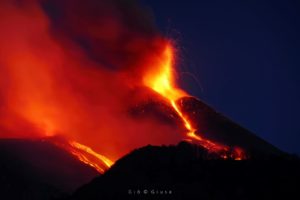May 04 , 2020.
Russia / Northern Kuriles , Ebeko :
VOLCANO OBSERVATORY NOTICE FOR AVIATION (VONA).
Issued: May 04 ,2020
Volcano: Ebeko (CAVW #290380)
Current aviation colour code: ORANGE
Previous aviation colour code: orange
Source: KVERT
Notice Number: 2020-71
Volcano Location: N 50 deg 41 min E 156 deg 0 min
Area: Northern Kuriles, Russia
Summit Elevation: 3791.68 ft (1156 m)
Volcanic Activity Summary:
A moderate eruptive activity of the volcano continues. According to visual data by volcanologists from Severo-Kurilsk, explosion sent ash up to 3 km a.s.l., an ash cloud is drifting to the east of the volcano.
This activity continues. Ash explosions up to 19,700 ft (6 km) a.s.l. could occur at any time. Ongoing activity could affect low-flying aircraft and airport of Severo-Kurilsk.
Volcanic cloud height:
9840 ft (3000 m) AMSL Time and method of ash plume/cloud height determination: 20200504/0319Z – Visual data
Other volcanic cloud information:
Distance of ash plume/cloud of the volcano: 6 mi (10 km)
Direction of drift of ash plume/cloud of the volcano: E
Source : Kvert.
Photo : Roskosmos , 21/8/2018 .
Iceland , Bárðarbunga / Reykjanes :
Around 540 earthquakes were located by IMO’s SIL seismic network this week, fewer then previous week when 730 earthquakes were located. Largest earthquake of the week was M4.8 and occurred in NE-ern part of Bárðarbunga caldera. It was detected just before 4AM on Monday 20th of April. In total 25 earthquakes were detected in Bárðarbunga caldera this week, and in addition to that thirteen earthquakes were located just E of the caldera.
Seismic activity is still ongoing on Reykjanes peninsula, 250 earthquakes were detected there last week. The activity is though decreasing compared to recent weeks. Most of the earthquakes on the peninsula, around 190, occurred in the vicinity of Grindavík. All of the earthquakes in that area were below M2.0.
Source : Vedur Is .
Photo : johann k Johansson.
New Zealand , Ruapehu :
Mt Ruapehu: Crater Lake is now cooling again
Published: Mon May 4 2020 2:30 PM
Volcanic Alert BulletinRUA – 2020/05
Volcanic Alert Level remains at 1
Aviation Colour Code remains at Green
An expected cooling trend for Crater Lake (Te Wai ā-moe) is now confirmed. The lake reached a peak temperature of 42°C in early April, and is currently at 35°C.
During February-April, Crater Lake (Te Wai ā-moe) heated slowly to a peak temperature of 42ºC. As often happens in a heating-cooling cycle, there is a period of slow change before a cooling trend is clearly shown in the data. That trend is now confirmed with current temperatures close to 35ºC, with further slow cooling expected.
Today the volcanic tremor intensity is weak, as it has been during the past month. After a peak of moderate strength in early March, the tremor declined slowly, almost in parallel to the lake’s cooling trend. Our energy input modelling points to a low-level but continued flow of heat into the lake, which indicates that the underlying vent area is open to upflows of volcanic gases and hydrothermal fluids
Last week GNS volcanologists briefly visited the lake to service the monitoring equipment there. They reported the lake as a uniform grey colour with just a few surface slicks and no obvious upwelling. At that time the water level had dropped to about 30 cm below overflow but following this weekend’s rain the lake is again overflowing into the upper Whangaehu River.
The Volcanic Alert Level remains at Level 1. The Volcanic Alert Level reflects the current level of volcanic activity and is not a forecast of future activity. Mt Ruapehu is an active volcano and has the potential to erupt with little or no warning when in a state of volcanic unrest. There is no change in the Aviation Colour Code from Green.
GNS Science and the National Geohazards Monitoring Centre continues to closely monitor Mt Ruapehu for further signs of activity. GeoNet monitors Mt Ruapehu via a network of seismic and acoustic sensors, GPS receivers, sensors in the lake and visits to the lake area and gas flights.
Source : Geonet / Michael Rosenberg / Duty Volcanologist .
Photos : Bradd Scott , Geonet .
France , La Guadeloupe :
Sunday May 3, 2020 at 12:00 p.m. Sequence of earthquakes in Les Saintes – Guadeloupe
A sequence of earthquakes of tectonic origin began in the Saintes area on Saturday May 2, 2020 at 19:27 local time (23:27 universal time UT *) and is currently continuing. Since the start of this sequence, 21 earthquakes have been recorded by OVSG instruments.
The 4 most important events are all located in the south of Terre-de-Bas:
Earthquake 1: May 2, 2020 at 7:27 p.m. local time (11:27 p.m. universal time) → magnitude 2.0 +/- 0.3; epicenter located 4 km south of Terre-de-Bas, 3 km deep (a hypocentral distance of about 5 km)
Earthquake 2: May 2, 2020 at 8:04 p.m. local time (May 3, 2020 at 12:04 a.m. universal time) → magnitude 2.1 +/- 0.3; epicenter located 5 km south-southwest of Terre-de-Bas, 4 km deep (i.e. a hypocentral distance of approximately 6 km)
Earthquake 3: May 3, 2020 at 2:51 a.m. local time (6:51 a.m. universal time) → magnitude 2.0 +/- 0.3; epicenter located 4 km south-south-east of Terre-de-Bas, 2 km deep (i.e. a hypocentral distance of approximately 5 km)
Earthquake 4: May 3, 2020 at 8:47 am local time (12:47 pm universal time) → magnitude 1.8 +/- 0.3; epicenter located 4 km southeast of Terre-de-Bas, 2 km deep (i.e. a hypocentral distance of approximately 5 km)
These earthquakes could generate, in the nearest affected areas, an average acceleration of the ground ranging from 1.1 to 1.6 mg (**), corresponding to macroseismic intensities ranging from I-II (not felt) to II (rarely felt) . Depending on the type of soil, the intensities may, however, have locally reached intensities III (weakly felt) to III-IV (widely felt).
Only the media reported to us this morning a testimony they received from one or more people who experienced one or more of these earthquakes. However, no testimony has come directly to the Volcanological and Seismological Observatory of Guadeloupe.
Source : IPGP.
Read the press release : http://volcano.ipgp.fr/guadeloupe/Communiques/last_communiques.pdf
Photo : A.-Brusini-hemis-fr


